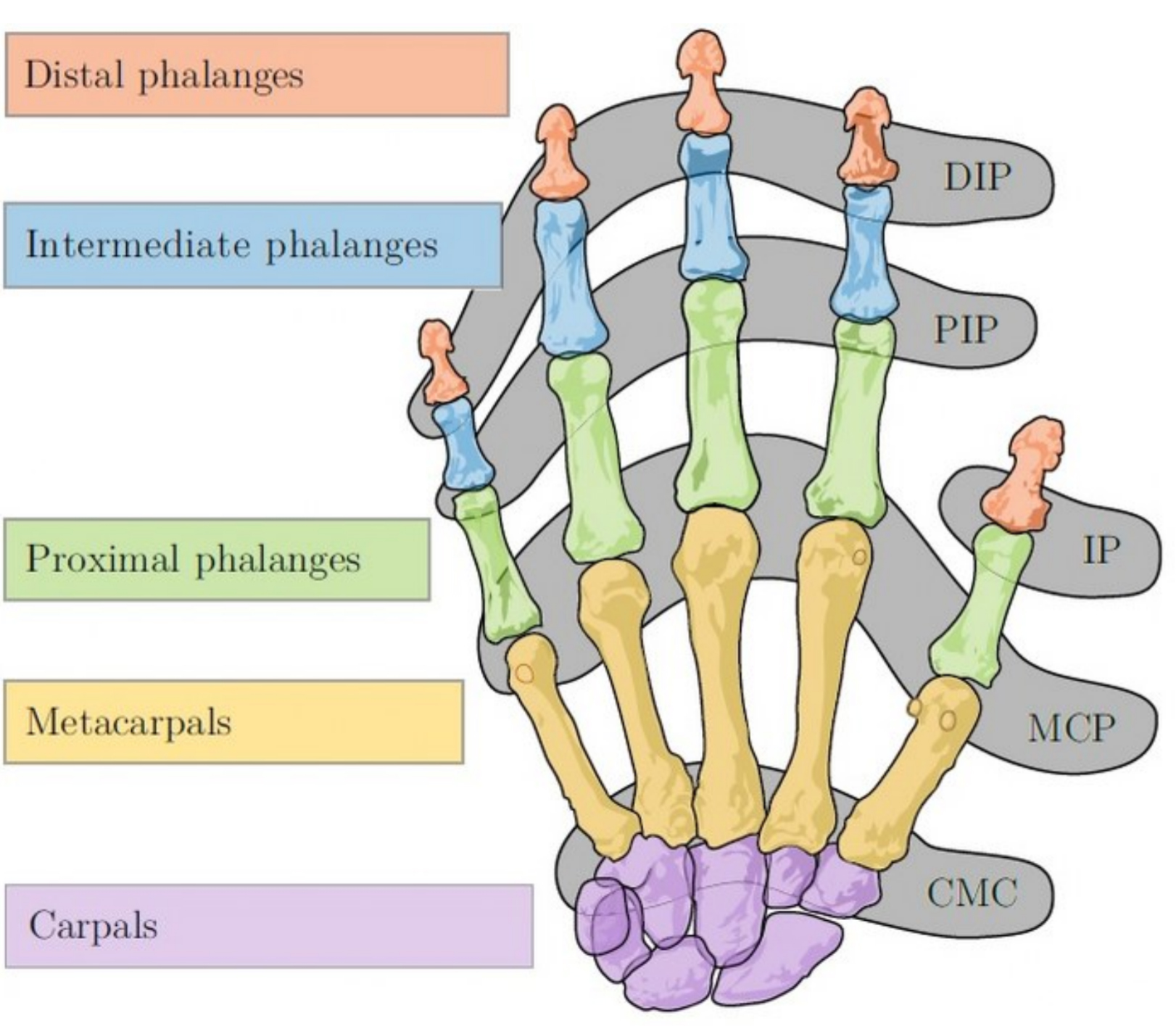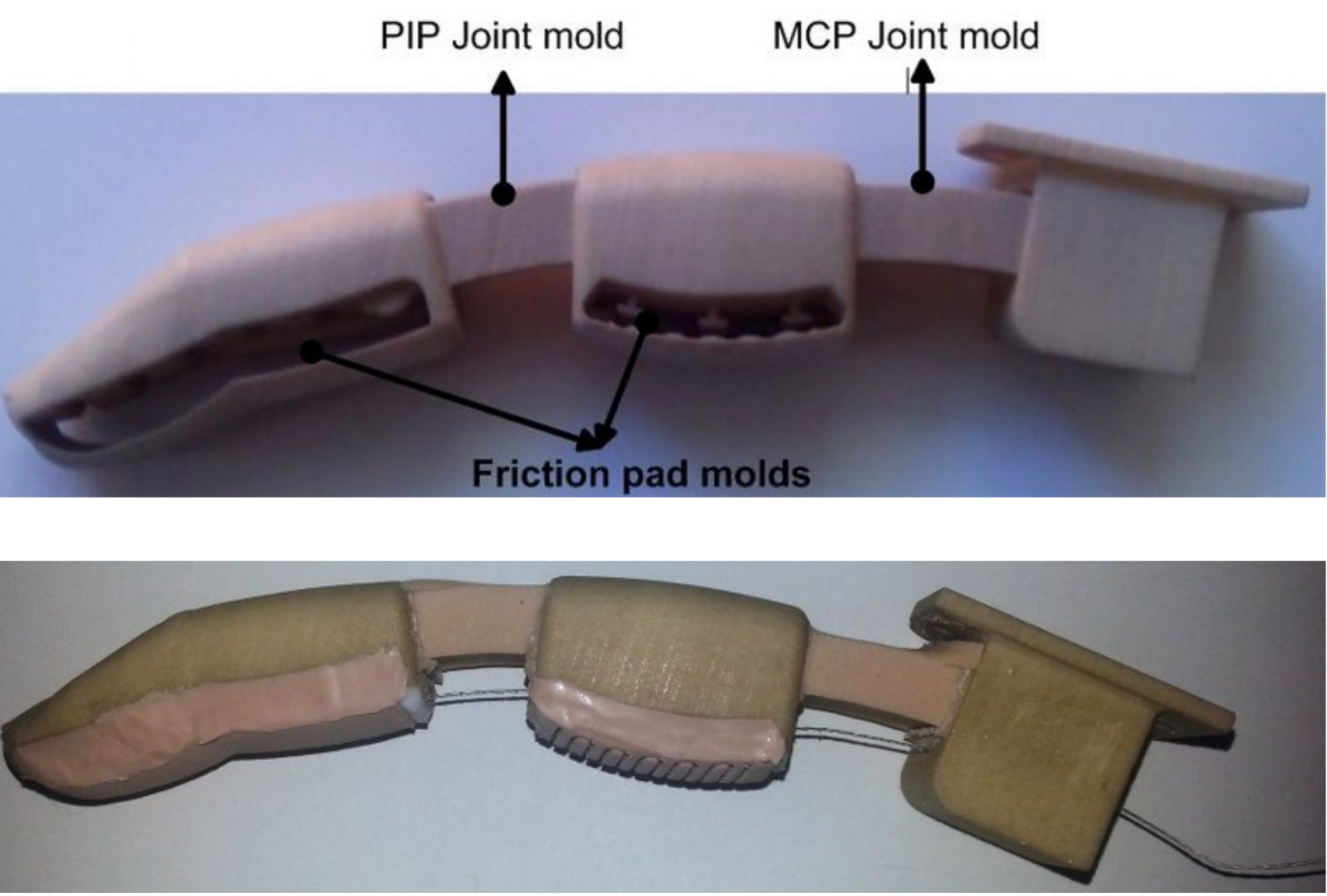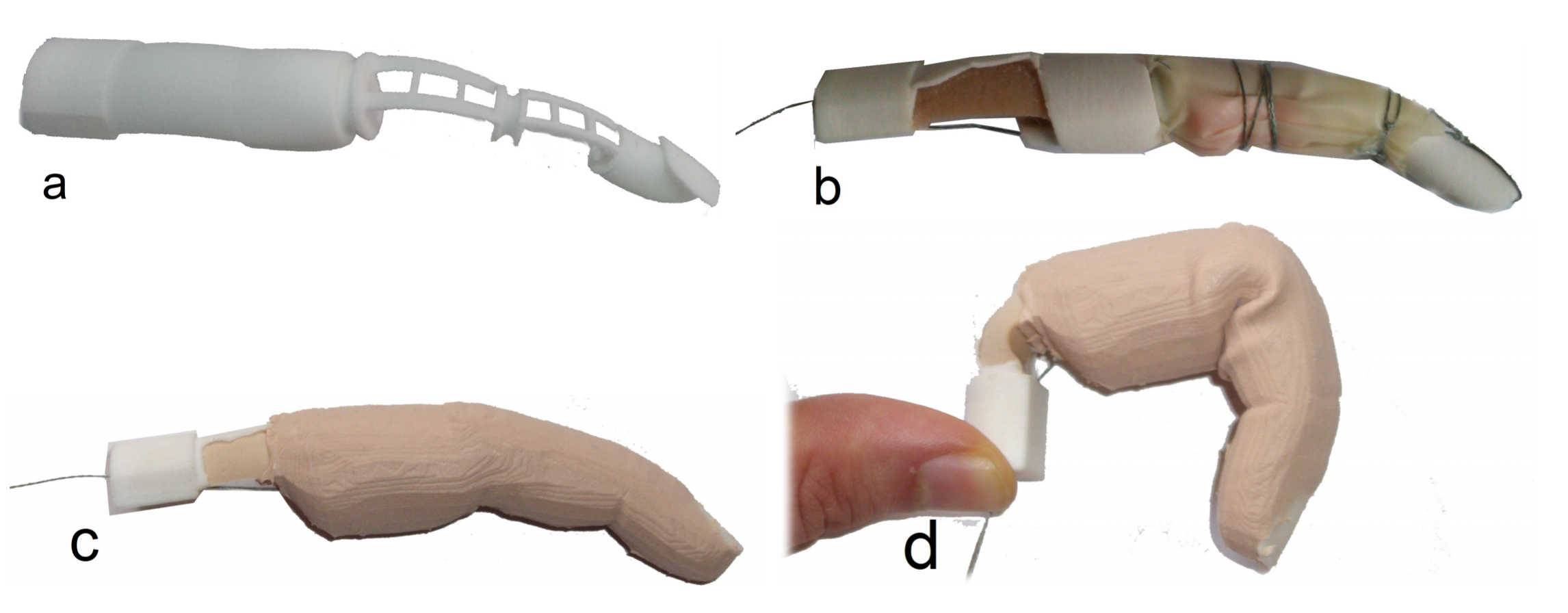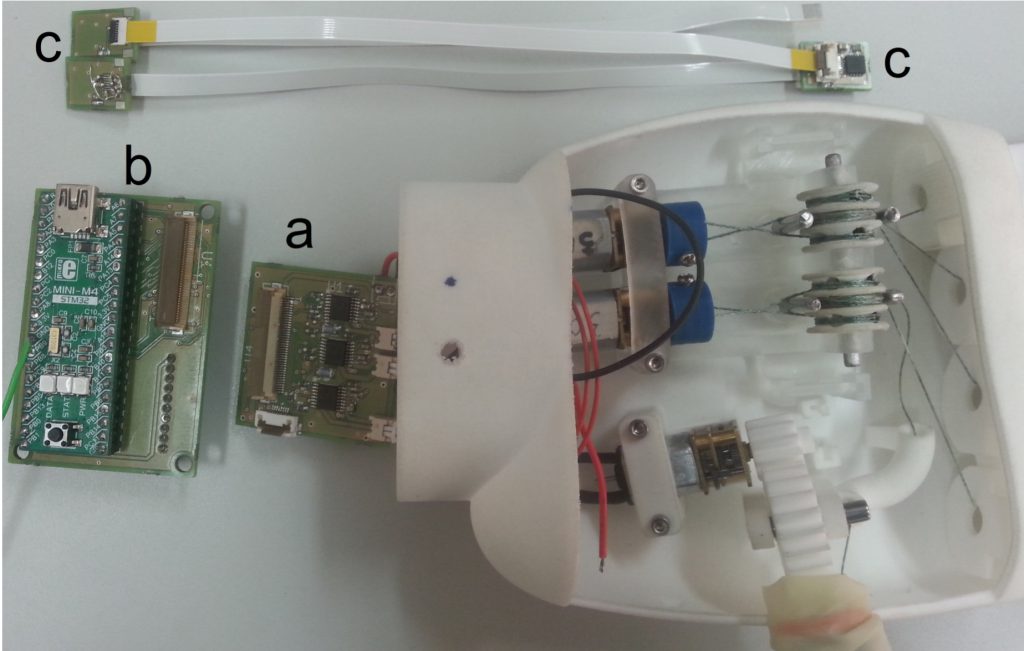Underactuated anthropomorphic hands:
People involved:
- Mahmoud Tavakoli
- Baptiste Enes
- Joana Santos
- Lino Marques
- Anibal T de Almeida

Bones and joints of the human hand, DIP—Distal Interphalangeal joint; PIP—Proximal Interphalangeal joint; IP—Interphalangeal joint; MCP—Metacarpophalangeal joint; CMC—Carpo-Metacarpal joint.

First fabrication methods: The 3D printed index finger before casting the Urethane rubber (up); the finger after casting (down)

The new fabrication process of the fingers with the second approach—(a) A 3D printed endoskeleton embeds the elastic MCP joint (b) Then the PIP and DIP joints are filled with sponge and covered by an sealing sleeve (c) The exterior surface of the finger is formed by casting a resin in the mold (d) The finger bending.

The home made miniaturized electronics. (a) The drivers PCB, composed of motor drivers and input for magnetic encoders (b) The control PCB composed of a STM32 ARM Cortex-M4 STM32 Microcontroller, and a X-bee communication (on the back of the board); (c) The daisy chain magnetic encoders boards.
Underactuated anthropomorphic hands: Actuation strategies for a better functionality
reference missing

